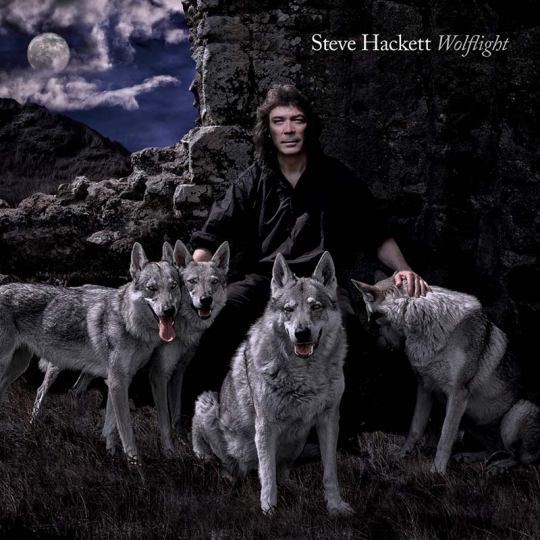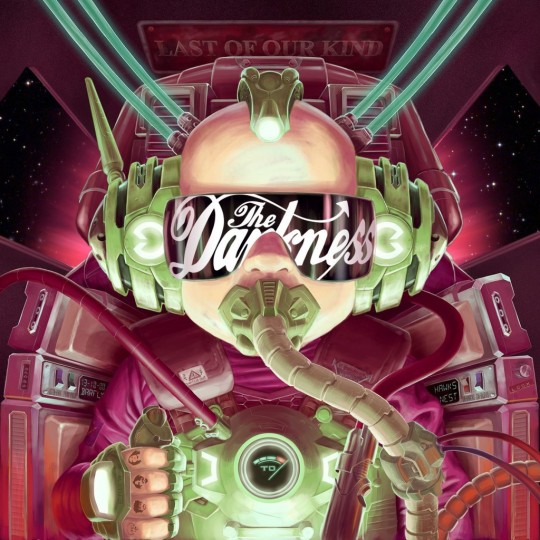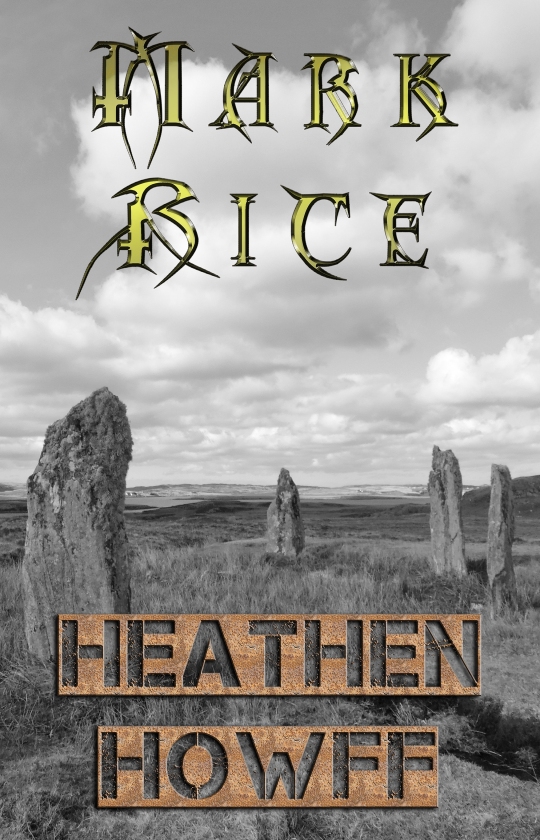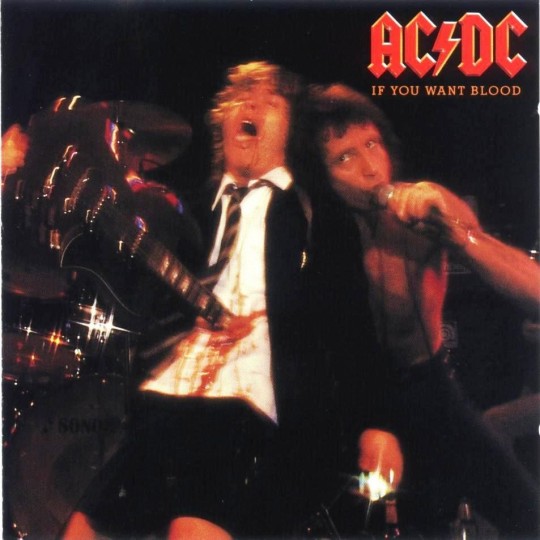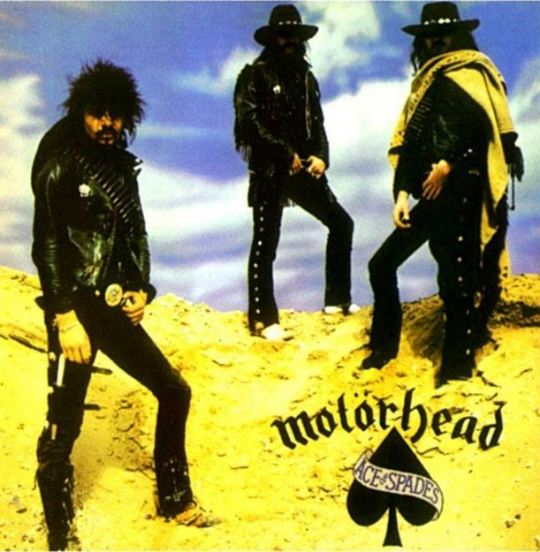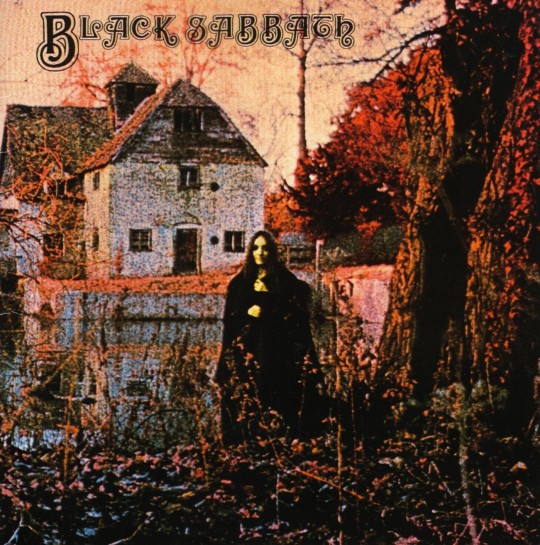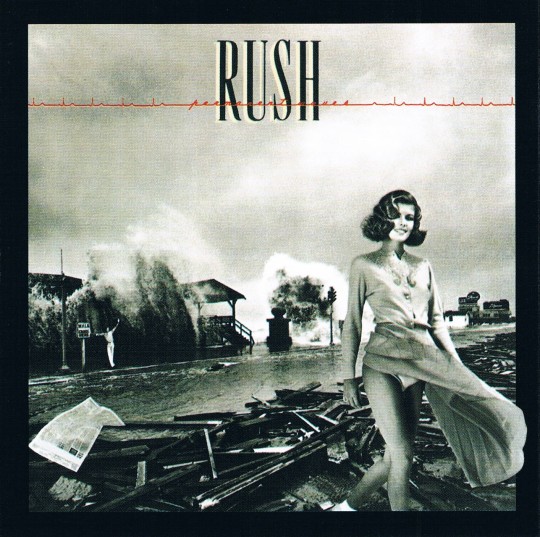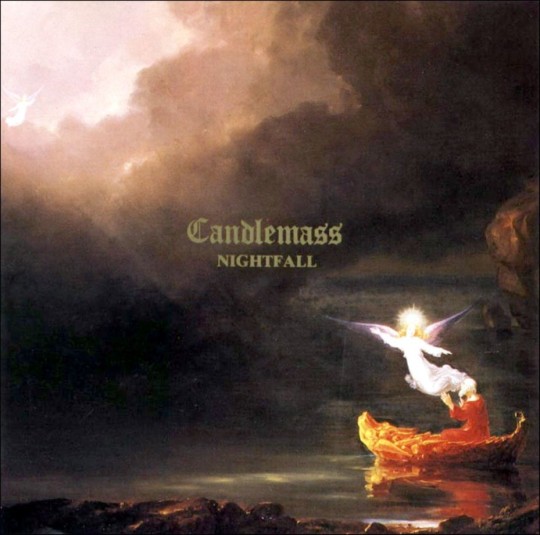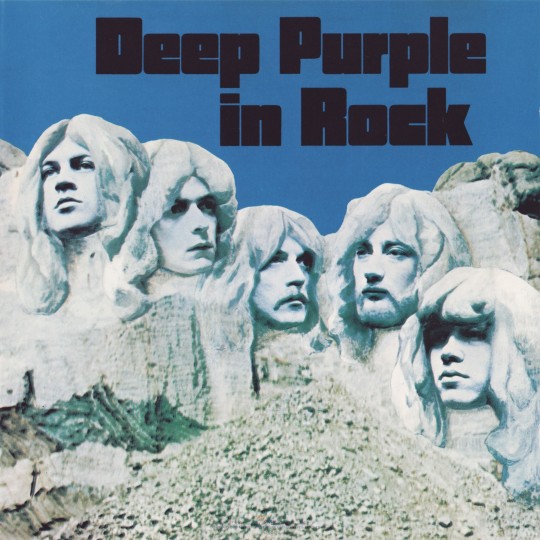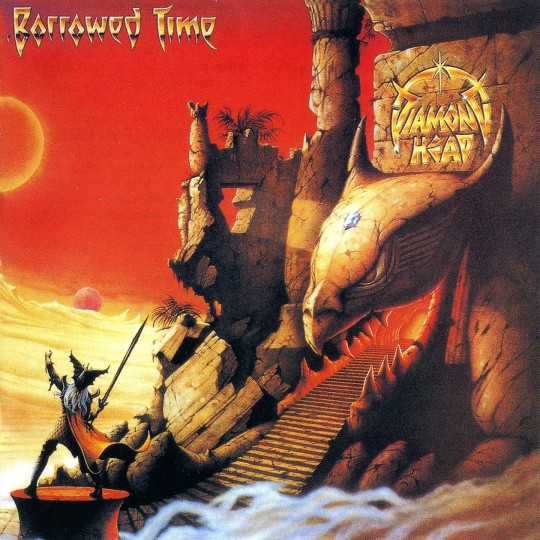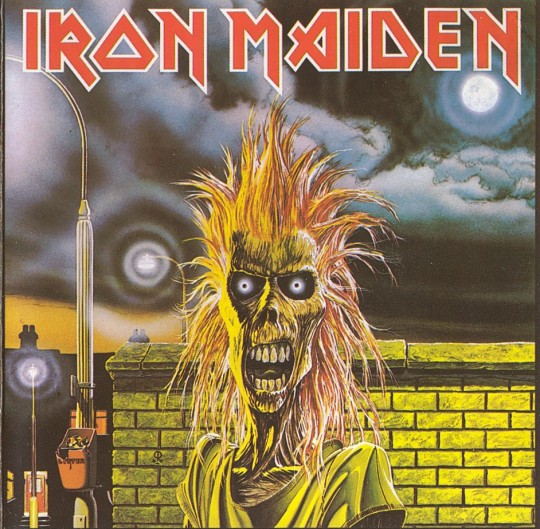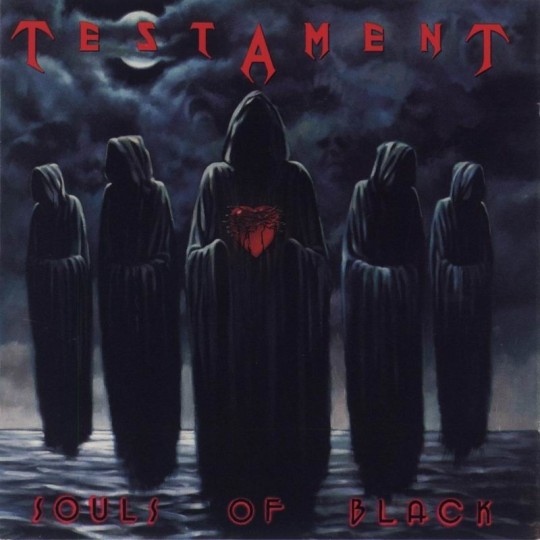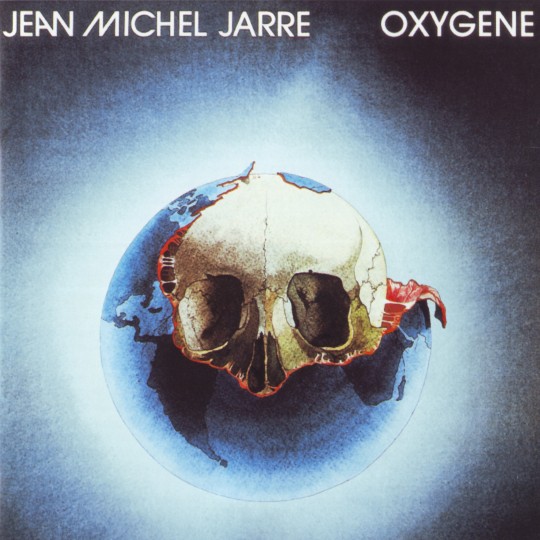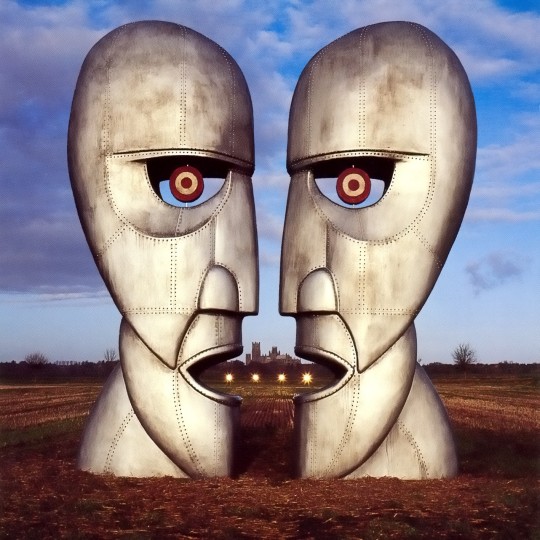The Albums of 2015
Music gained much in 2015, but there was also monumental loss. Motörhead founder Lemmy died just weeks after his pal Phil ‘Philthy Animal’ Taylor, drummer on classic ‘head albums. A world without Lem and Phil is a strange place. Lemmy was more than just the godfather of heavy metal. He was integrity personified. An original. A one-off. Whether singing or speaking, his gruff voice was instantly recognisable as the sound of gravel-throated truth. I was lucky enough to meet Lem and experience his wisdom, humour and warmth. Some people walk into a room without making a noticeable change to its energy. Not Lemmy. He had presence. One didn’t have to see or hear him to be aware of that presence. It could be felt when he was near. I know. I felt it.
Rewind eleven years. My journalist friend Mike and I are backstage at Glasgow Barrowlands after a barnstorming Motörhead show. Smiling drummer/vortex of wild energy Mikkey Dee greets us with handshakes and bear hugs. Guitarist Phil Campbell is reclined on a sofa, immersed in his thoughts. Behind him, stuck to a wall, a piece of A4 paper features the scrawled words ALL CIDER BELONGS TO PHIL CAMPBELL. A bulbous glass container like a crystal cauldron has been filled with miniature Cadbury’s confectionery. Lingerie-clad women relax with drinks. Lem is nowhere to be seen. The ebullient Dutchman Mikkey invites Mike and me to help ourselves to whatever we want. “Everything is fair game,” he tells us, gesticulating wildly around the room, “except the cider. Best not to touch the cider.” Glancing over at Phil Campbell, Mikkey explains, “Phil can be…volatile…if anyone else drinks the cider.” In addition to Phil’s supply of alcoholic apple juice, there are gallons of vodka, whisky and lager. I’m driving, so no booze for me. Here in Glasgow, city of my birth – in Barrowlands Ballroom, where my maternal grandmother and grandfather used to dance on Saturday nights before World War 2 – I find myself in a surreal scene backstage with Motörhead and entourage, drinking Evian water and eating ‘fun-size’ Dairy Milks, Fudges and Twirls while the ever-smiling Mikkey Dee regales Mike and me with stories. I’m enjoying the conversation with Mikkey, whose powerhouse drumming I’ve enjoyed since way back in his days with King Diamond, but I can’t help wondering where Lem is. Then I sense something behind me. I feel it. The energy in the room has changed and I know he is there. I turn round and that face is looking back at me. Lemmy has arrived. He looks every bit as iconic in the flesh as he does on record covers and the pages of music magazines. Words tumble out of my mouth. “Hello, Sir. That was a phenomenal gig tonight. Thank you.”
“Thank you,” growls Lem. “We do our best.” He extends his right hand for a shake. As I grasp it we look each other in the eyes. I sense that I’m being weighed up. This continues for a couple of seconds, then Lem smiles. Over the rest of the night we chat about life on and off the road. Mike – who is reviewing the gig for a national newspaper – hasn’t arranged an interview, but that doesn’t stop him from going into journalist mode. This is a chance for him to dig dirt on other musicians – exclusive insider information, straight from the Motörhorse’s mouth. Lem is no mudslinger, though. He has nothing bad to say about any of his peers. So Mike gravitates towards his drum hero Mikkey, to see if he has any juicy gossip to share. Over by the Cadbury’s confectionery cauldron, Mikey and Mikkey laugh and joke like the pair of nutters they are, pulling preposterous poses for photos. I stay with Lemmy. When I ask about the early Motörhead tours with Saxon, his face lights up. He speaks of Graham Oliver and Biff Byford with huge affection. I mention that a few weeks ago Blackmore’s Night cancelled their Edinburgh gig an hour before it was meant to start. Venue staff turned away ticketholders, claiming that Candice Night had last-minute concerns about her throat. This left Mike, me and thousands of other concertgoers (many of whom had turned up in medieval garb) disappointed and out of pocket. As a comparison, I recount events at a recent Saxon show in Glasgow, where after the gig Biff apologised for his voice, explaining that he was loaded with the flu. This apology surprised the audience, as Biff’s vocal delivery had been perfect.
“Most singers are delicate creatures,” says Lem, “but not Biff. He’s a big strong brute who’ll go onstage even when he’s so sick that anyone else in his position would cancel the show. He’s a professional. And he never has an off-night.”
I tell Lem that I started listening to Motörhead when I was little more than a toddler, growing up on their music as well as being heavily influenced by their image and attitude. “Raised on Motörhead,” he muses. “What a horrible thought. That must make me your bastard godfather.”
“Aye,” I agree, liking the idea, “Ah suppose it does.” Lem smiles. I smile back. In that moment all is right with the Universe.
I tell Lem the story of when, at age ten, I approached my mother and asked her to buy me a denim jacket so I could rip off its arms then cover its body in studs and band patches, only for her to reply, “Forget it. You’d look like one o’ those degenerates in Motörhead. You can have a nice bodywarmer instead.”
Lem roars with laughter. When he recovers enough to talk he says, “She sounds like a good woman, your mum. You wouldn’t wanna look like those degenerates in Motörhead!”
That night was one of warmth, friendship, camaraderie, stories, laughter and a palpable sense of heavy-metal family. Mikkey and Lem were a joy to be around. Afterwards Mike described them as thoroughly lovely chaps. Perhaps those aren’t the words you’d expect associated with the mighty Motörhead, purveyors of thunderous sounds laden with wartime imagery. But Mike’s words were bang on.
Not all Lem’s trips to Glasgow went as smoothly as that one. A few years earlier he and Fast Eddie Clarke, then-guitarist of Motörhead, arrived at Radio Clyde for an interview the station had requested. An hour after the interview was due to start, Lem and Ed were still waiting in the foyer. No one had offered them an explanation for the delay. This annoyed them, as they were generous with their time but didn’t appreciate it being wasted. Lemmy grumbled to Ed that the DJ must think his time more important than theirs. Spotting a retractable fire hose in a wall cavity, Fast Eddie nodded towards it and said, “Let’s do ‘im!” Ed unrolled the fire hose, pointed its nozzle into the offending DJ’s booth, switched it on, then he and Lemmy calmly walked out of the building. Had that DJ been professional enough to be on time, or else explained that he was running late rather than leaving Lem and Ed sitting stranded in a radio station for an hour, he could have avoided having his office turned into a swimming pool. As Lem often said, manners cost nothing.
Lem, you were one of the good guys, walking life as you talked it, unflinching in your honesty. I learned a lot from you. Integrity is in short supply but you had it in spades. You had all the good stuff in spades, my beautiful bastard godfather. You were, are and always will be the Ace in the pack.

Lem and me
Now to my albums of 2015.
1= Moonspell – Extinct
A masterpiece of Gothic metal from Portugal’s finest export. Their musical influences are obvious: The Sisters of Mercy, Depeche Mode, Type O Negative, The Cult, Front 242, Front Line Assembly. There’s also a healthy dose of originality and a willingness to experiment. String sections and eastern melodies provide a counterpoint to eviscerating riffs. The light/shade duality is present throughout, with Fernando Ribeiro’s vocals alternating between a deep baritone croon (à la Dave Gahan) and a roar that would make most death-metal vocalists soil their pants and go running to their mothers. Back in the ‘90s Ribeiro was one of the first to alternate between clean vocals on a verse and a growled chorus (or vice versa), a technique that many bands have since adopted (Fear Factory’s Burton C. Bell does it beautifully, while in Finnish melodic-death metal it has become the norm, with Insomnium, Amorphis, Omnium Gatherum and others using the technique to great effect). Lyrically, musically and atmospherically, Extinct is perfect. A gesamtkunstwerk.
Favourite track: Breathe (Until We Are No More).
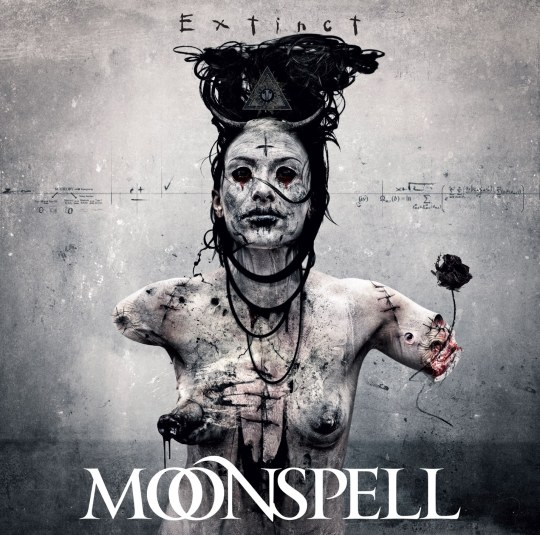
1= Wolfheart – Shadow World
When Tuomas Saukkonen announced in 2013 that he was disbanding his five musical projects Black Sun Aeon, Before the Dawn, The Final Harvest, RoutaSielu, and Dawn of Solace, in order to focus on one new project – Wolfheart – I was concerned. Losing five excellent Finnish bands and gaining one unproven one didn’t seem like a good deal. I kept an open mind and hoped that Tuomas would manage to distil the strengths of his five previous bands into Wolfheart. The 2013 debut Winterborn didn’t quite achieve this but Shadow World is a different prospect altogether. It is magnificent, epic, spellbinding. Turning it up loud is like letting a storm into your body. And holy fuck, does that feel good.
Favourite track: Abyss – only in the icy north could this be born.
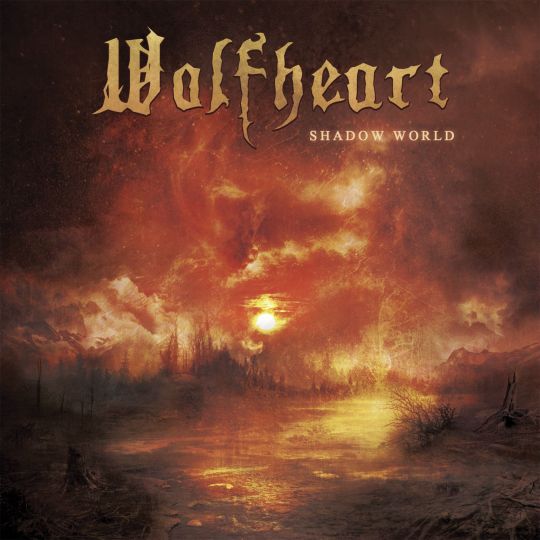
1= Tengger Cavalry – Blood Sacrifice Shaman
Mongolian Folk Metaaaaaaaaaaaaaaaaaal! When a band dedicates an album to wolf, eagle, horse, Genghis Khan and the blue sky Tengger, you know they’re not fannying about. This was my biggest musical surprise of 2015. It became my most played album during the first half of the year. Mesmerising Mongolian throat singing accompanies savage riffs, blast-beat drums and nomadic folk melodies on traditional instruments. These components aren’t flung together in a haphazard fashion. They’re expertly arranged to create passages of delicacy then brutality, sorrow then rage. Astounding.
Favourite track: Tengger Cavalry.
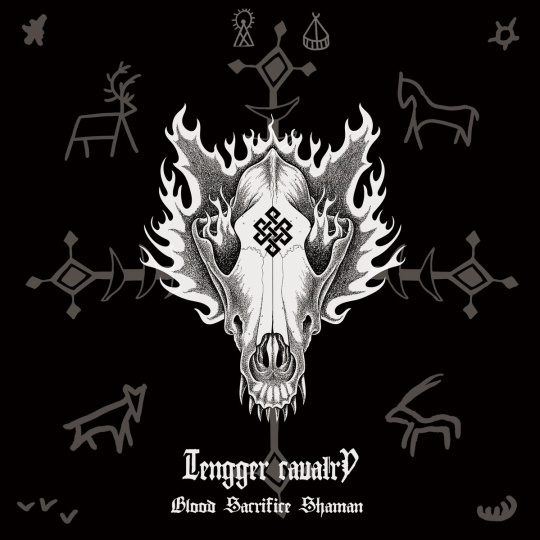
1= Ghost – Meliora
My most listened-to album of 2015. The CD went into my car stereo and remained there for months. On long drives I played it on repeat, never tiring of its sublime harmonies. Shilo the wolfboy loves it too. Ghost’s music puts him into a blissed-out reverie (which is appropriate, as several times we’ve met folk who pointed excitedly at him and shouted, “It’s Ghost from Game of Thrones!”). As on previous Ghost recordings, there’s a strong choral sound accompanied by gorgeously subversive lyrics. The harmonies are still reminiscent of Blue Öyster Cult, while the heavier riffs have hints of Mercyful Fate with an occasional soupçon of Slayer. Eminently listenable, deep, clever and loaded with meaning.
Favourite track: He Is.
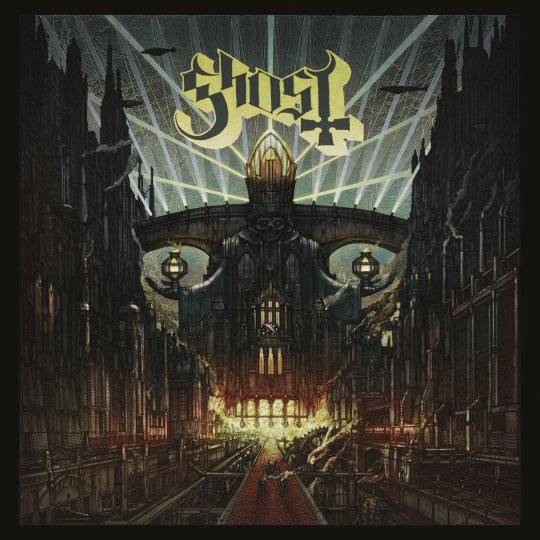
1= Killing Joke – Pylon
Another surprise. For decades I’ve recognised the greatness of Killing Joke. I hear their influence in myriad other bands, most notably The Cult, Zodiac Mindwarp and the Love Reaction, Front Line Assembly, and Fear Factory. Despite that, I wasn’t expecting KJ’s strongest album to date to appear in 2015. It did, though. Killing Joke are masters of their craft who don’t do anything by accident. Every detail of their sound is meticulously planned and executed. Turn this album up loud and you’ll experience a whole new dimension opening up. That’s not me overselling the band: it’s truth. Pylon is astonishing.
Favourite track: Big Buzz – pure sonic bliss.
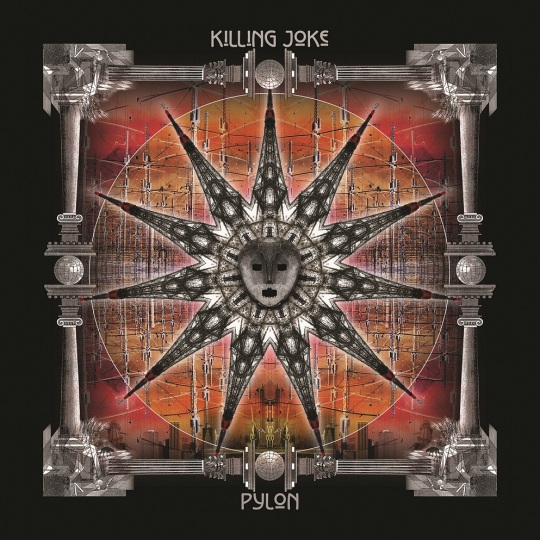
1= Paradise Lost – The Plague Within
Paradise Lost’s elemental riffs build into dirges that are both gloomy and uplifting: a technique PL have mastered over the last couple of decades. Their 2015 offering shows that they’re once again at the top of their game.
Favourite track: No Hope in Sight.
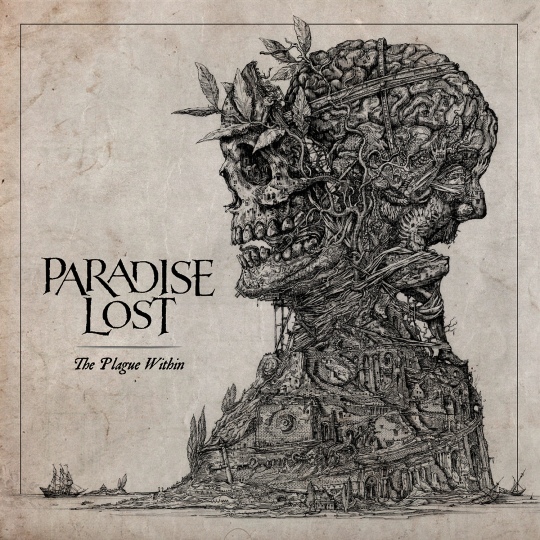
1= Amorphis – Under the Red Cloud
Amorphis redefined metal with Silent Waters in 2007 (my album of that year by a country mile, and my equal-favourite album of all time). Since then they’ve continued to create epic music. Thematically, their songs are rooted in Finnish mythology. Each album is like a musical chapter of The Kalevala. On Under the Red Cloud they continue that tradition. The textures are vast and sweeping. Melodies flit between subtle folkiness and crushing heaviness. Tomi Joutsen’s vocals alternate between a glorious soar and a brutal roar. Masterful.
Favourite track: The Four Wise Ones.

1= Children of Bodom – I Worship Chaos
Alexi Laiho has the respect of his guitarist peers not just in his native Finland, but across the globe, thanks to his lightning-fast, super-accurate sweep picking, his unique shredding style, and his neo-classical riffage, which has become CoB’s sonic trademark. Vocally, Alexi is Mr Marmite. His singing style isn’t everyone’s cup o’ tea (he sounds like he’s just had his throat cut and is gargling his own blood) but I like it. It suits the music. Despite prodigious compositional skills, technical excellence and no-holds-barred delivery, CoB had never (until now) created an album that scorched from start to finish. I Worship Chaos is that album. The balance of heaviness and melody is skilful, the delivery phenomenal. The standout tracks on the deluxe edition are Morrigan (with its awe-inspiring Everytime I Die-ish riff), Mistress of Taboo (a cover of The Plasmatics’ tune – the CoB version sounds like Scorpions’ Another Piece of Meat flung into a blender with Alice Cooper and turned up to high speed), My Bodom (I Am the Only One), and Prayer for the Afflicted. With every listen I hear something new but it’s never a weak moment – there isn’t one.
Favourite track: Prayer for the Afflicted.
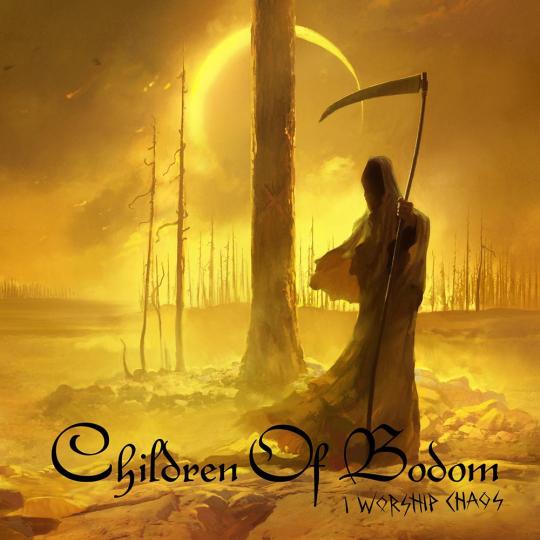
1= Finsterforst – Mach Dich Frei
In 2004 a rag-tag collection of heathens formed a band in southwest Germany’s Black Forest. Their goal was to create a sonic expression of the mystical landscape around them. Collectively known as Finsterforst, they’ve gone from strength to strength, fusing various styles of metal (black, thrash, classic, folk) into a seamless whole. Mach Dich Frei is their finest album to date – an immaculate blend of ethereal instrumentals and anthemic metal. To Finsterforst’s credit, they’re the only metal band to successfully integrate the accordion in a way that’s unobtrusive and adds to their sound rather than watering it down. This says much about their classical sensibilities – they’re mindful composers, not just riff merchants who fling in the odd burst on traditional instruments and hope for the best. This band knows when an instrument should be heard and when it should be silent. They understand resonance and atmospherics. I’ve listened to Mach Dich Frei a lot. It improves with every listen. A masterpiece.
Favourite track: Mach Dich Frei – a glorious twin-guitar opening (rhythm riffs reminiscent of Megadeth’s In My Darkest Hour, and a lead refrain with the tonality of Chris DeGarmo circa classic Queensrÿche) evolves into a darker, heavier, more complex composition driven by anthemic vocals and a sense of majesty.
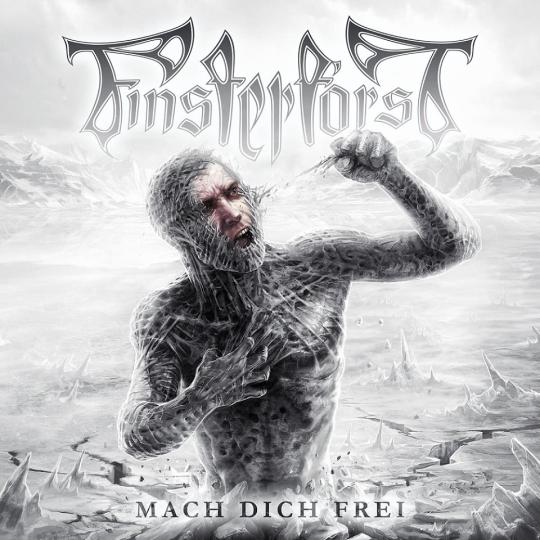
1. Fear Factory – Genexus
Fear Factory’s Demanufacture redefined metal in 1995. Frontrunners of the industrial-metal movement, then inventors of cyber metal, they create soundscapes imbued with a futuristic dreamlike quality. FF’s music is the soundtrack to a future world in which humans co-evolve with machines, to the point where the distinction between one and the other becomes blurred. Genexus is FF firing on all cylinders: blast-beat drumming, huge riffs, eviscerating bass, machinistic rhythms alongside Burton C. Bell’s distinctive clean vocals (like the chants of a robot monk at worship) and his angry growls (like a bear who’s been kicked in the balls). Burt switches between singing styles with ease, instinctively knowing what works best with the music. The adage you can’t judge a book by its cover doesn’t apply to Genexus. One glance at the artwork tells the savvy metallist exactly what can be found inside: supreme cyber metal from the ones who do it best.
Favourite track: Regenerate – as a kid I dreamed that one day metal would sound like this. A futuristic blend of passion, power, precision, originality, melody, heaviness and confidence. Utter perfection.
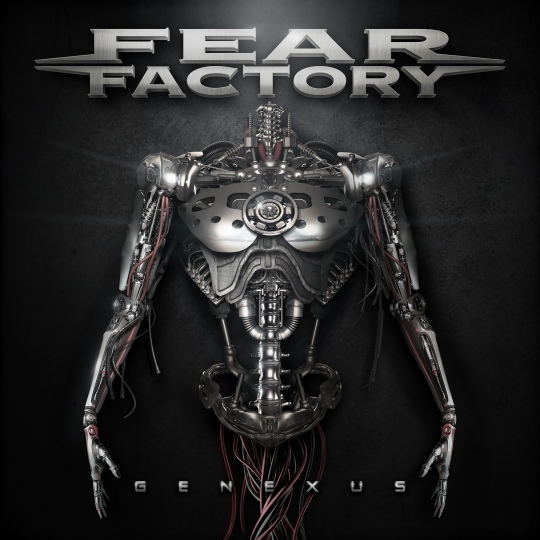
1= Jean Michel Jarre – Electronica 1: The Time Machine
Ever since I first heard Jarre’s music (as a young child at the London Planetarium, where holographic stars and planets floated past my face as the otherworldly melody of Oxygène IV filled the air), I’ve been spellbound by it. Ever the visionary, Jarre decided to make his 2015 release different to its predecessors by composing and recording an album of collaborations. The result is refreshing and original. The pairing of Pete Townshend and JMJ looks odd on paper but in practice it works (perhaps because of Pete’s longtime love of synths, most famously heard on The Who’s milestone Baba O’Riley). A more logical union is that of Tangerine Dream with Jarre. Musically and culturally, those two entities are mirrors of each other, with Jarre’s symphonies rich in French joie de vivre while TD’s compositions possess a colder, more Germanic feel. The collaboration between these two legends culminated in Zero Gravity, a masterclass in electronica. Tangerine Dream founder/main man Edgar Froese died soon afterwards, leaving Zero Gravity as his last recording. As a mark of respect, JMJ dedicated the album to Froese.
Favourite track: Immortals by JMJ with Fuck Buttons.
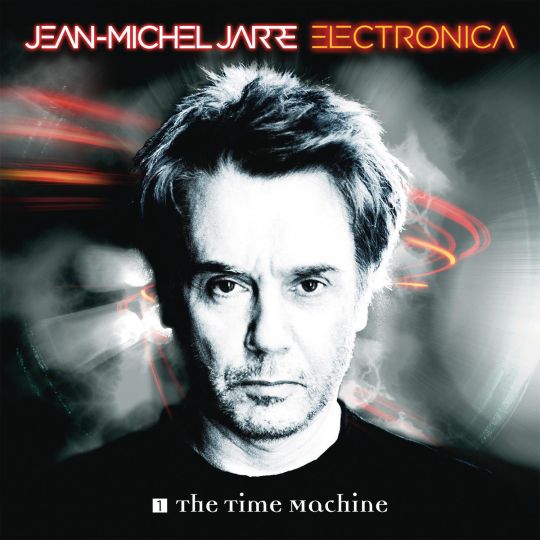
1= Ghost Bath – Moonlover
You might imagine that a North Dakotan band pretending to be Chinese musicians living in China (as Ghost Bath did to secure a deal with Chinese label Pest Records) would be a major controversy. In the strange arena of black metal, such behaviour didn’t even make the top 50 most controversial moments. (In case you’re wondering what one would have to do to score high on the scale, current top place is held by Varg Vikernes, aka Count Grishnackh, who, as the Second Wave of Black Metal was beginning in ’90s Norway, slaughtered his former friend Oystein Aarseth – aka Euronymous, founding member of the band Mayhem, founder of the mysterious Black Metal Inner Circle, and owner of influential Oslo record store Helvete – in between burning down several historic churches). So by black-metal standards – with suicide, murder, arson, assault, self-mutilation, sacrifice and blood-drinking all popular pastimes – Ghost Bath’s pretending-to-be-Chinese stunt didn’t raise many eyebrows. They were more like the cat who pretends to be your pal because he thinks there might be food in it for him (Chinese food, on this occasion). Their prank was victimless: they were devious for their own gain, but Pest Records did well out of them, too. Ghost Bath’s debut album Funeral was released to critical acclaim. By the time they were rumbled as non-Chinese the band had amassed a legion of fans who didn’t give a shit where the members were from, just as long as they continued making music. Pest Records was less forgiving, though (a surreal mirror of the Seinfeld episode The Chinese Woman, in which George Costanza’s mother takes phone advice from a woman she thinks is Chinese, then, upon meeting the woman and seeing that she’s not oriental, shouts, “I thought I was getting advice from a Chinese woman. I’m not taking advice from some woman from Long Island!”). Ghost Bath’s ethics may be up their arse but their music is amazing. Second album Moonlover was released by German label Northern Silence Productions (to my knowledge, the band hasn’t claimed to be German…yet). Moonlover is an accomplished piece of work. The vocals are inspired by Norway’s Second Wave of Black Metal (in other words, they’re the tortured howls of the damned), but the instrumentation – rather than being discordant and screechy in the lo-fi vein of much black metal – is sublimely melodic and crystal clear. Uplifting guitar melodies combine with wails of pain to deliver a sensory experience that I find exhilarating. The band claims to be all about playing from the heart and creating something beautiful. Job done.
Favourite track: Golden Number.
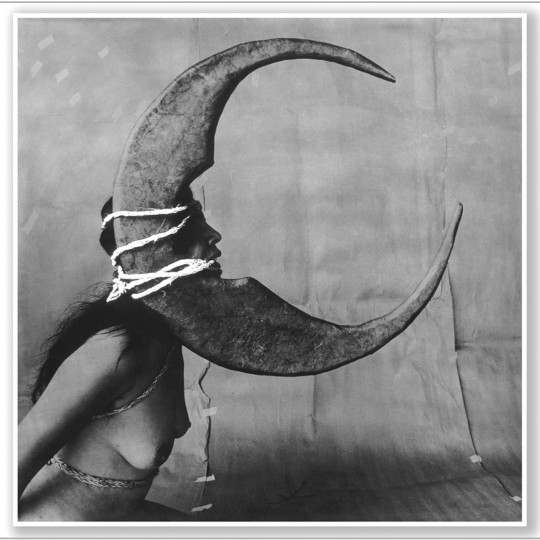
2. Swallow the Sun – Songs from the North I, II and III
An epic triple-CD (or quintuple-vinyl) album from the band who – along with fellow Finns Amorphis, Insomnium, Wintersun, and Omnium Gatherum (as well as Dark Tranquillity and At the Gates from Sweden) – have spearheaded the melodic-death-metal movement over the past two and a bit decades. The compositions are complex, the lyrical themes mythic, the production flawless, the musical execution breathtaking, and the emotional impact profound. Songs from the North I, II and III is dedicated to StS founder/guitarist Juho’s late father. Each of the three discs has a mood of its own. Songs from the North I: giant walls of riffage, powerful vocals and a rhythm-section rumble that could crumble walls. Songs from the North II: delicate wintry melodies set against softly sung lyrics of melancholy. Songs from the North III: sonic-doom funereal dirges with occasional glimpses of light in the form of quiet interludes and female vocal harmonies. As a tribute to a father this is beautiful. As a musical achievement it is monumental.
Favourite track: The Heart of a Cold White Land.
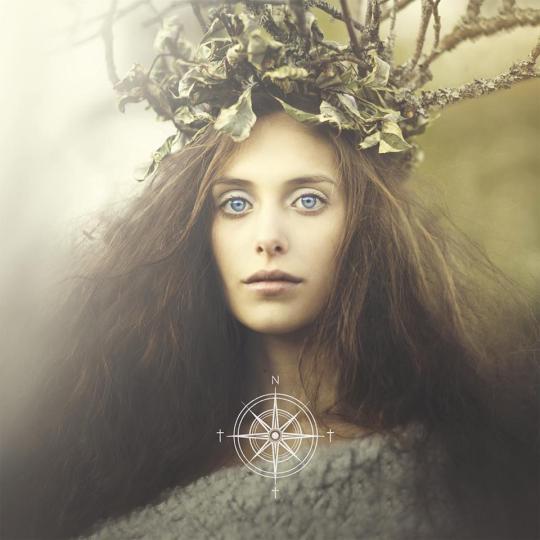
“These skies of the winter stars
Arise to the frozen night
And the light of summer that never dies
In these songs from the North.”
3= Joe Satriani – Shockwave Supernova
Another stunning collection of guitar wizardry from a supreme musician. Wonderfully diverse, Shockwave Supernova is another sonic smorgasbord of Satriani’s unique talent. When your instrumentals are this well composed and this perfectly executed, you don’t need vocals.
Favourite track: Goodbye Supernova.
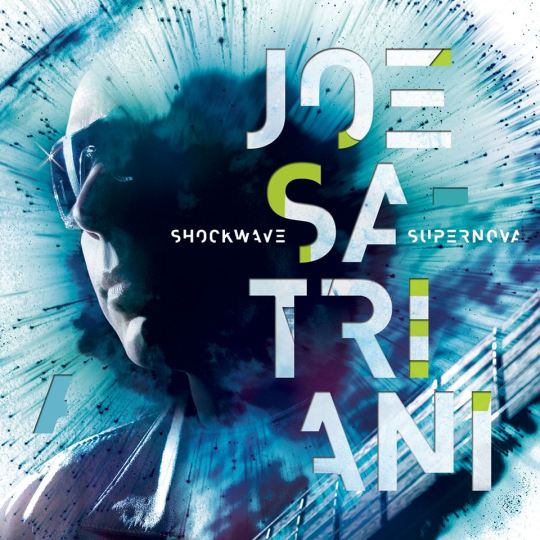
3= Myrkur – M
M is the first full-length album from one-woman black-metal project Myrkur, brainchild of Denmark’s Amalie Bruun. Having signed a deal with Relapse Records on the strength of her debut EP, Bruun was in a perfect position to further her vision of Myrkur. Despite Bruun’s insistence on referring to Myrkur as a black-metal project (the album cover couldn’t be more black metal if it tried: monochrome photo; grim grey skies; title in Viking runes; dark trees silhouetted beside a spectral female on the edge of a lake at night), her music has as much in common with Enya as it does with Venom, Hellhammer or Burzum. That’s not a complaint – just an observation. There’s also an obvious Wardruna influence (always a good thing), with lighter ethereal soundscapes flowing naturally into heavier Darkthronesque swathes. The components are blended with skill, precision and an ear for what works. I wonder what the second full-length album will bring. Will it be more black metal meets Enya for a jig in the forest? Or will it be all-guns-blazing, take-no-prisoners, burn-down-all-churches blaaaaaaaaaaaaaaaaaaaaaaack metaaaaaaaaaaaaaaggghhhhhhlllllll? I’d bet on the former, but either way I’ll be checking it out with interest.
Favourite track: Onde børn (which translates as Evil Children).

4. John Carpenter – Lost Themes
John Carpenter’s work revolves around film. A renowned producer, director, screenwriter, editor and composer, he’s best known for the 1978 horror classic Halloween (which he wrote and directed, as well as composing/performing its legendary musical score). Carpenter has a long string of films and soundtracks behind him but it wasn’t until 2015 that he released his first real solo album (as opposed to a movie soundtrack with his name attached to it, of which there are many). Lost Themes is a diverse array of dark electronica, all beautifully moody and steeped in Carpenter’s trademark ominous sound.
Favourite track: Vortex.
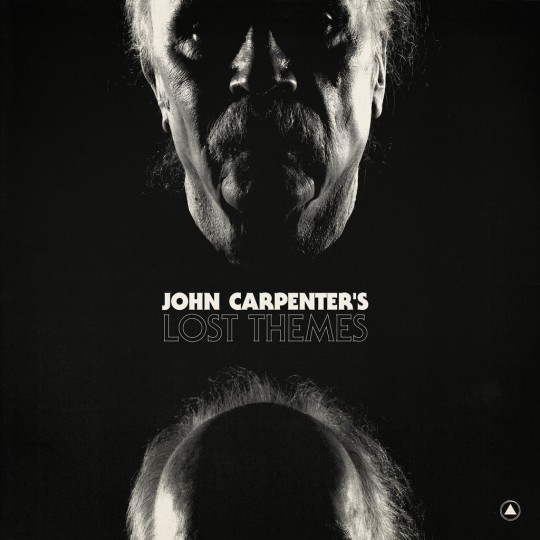
5. Michael Monroe – Blackout States
Like most of Mikey’s stuff with Hanoi Rocks and as a solo artist, his 2015 album Blackout States is a slice of no-frills, gung-ho rock ‘n’ roll. Without this man blazing the trail, there would have been no Guns ‘n’ Roses or LA Guns (either that or those bands would have taken radically different forms to the ones we know). The glam-metal boom of the ‘80s would probably never have happened were it not for Hanoi Rocks. Glam rock may have Marc Bolan, Bowie, and The Sweet to thank for its existence, but glam metal stemmed from Hanoi Rocks, both in sound and sleazy image. That influence can still be heard today, especially in Monroe’s native Scandinavia, where modern metal glamsters like Hardcore Superstar, Reckless Love and CRASHDÏET proudly tread the path Michael Monroe and Andy McCoy paved. It feels reassuring to know that Monroe himself is still cranking out quality new material, still touring, still looking and sounding as good as ever. Hail to him.
Favourite track: This Ain’t No Love Song – a track so good it makes me want to overlook the shite grammar (double negative) in the title.
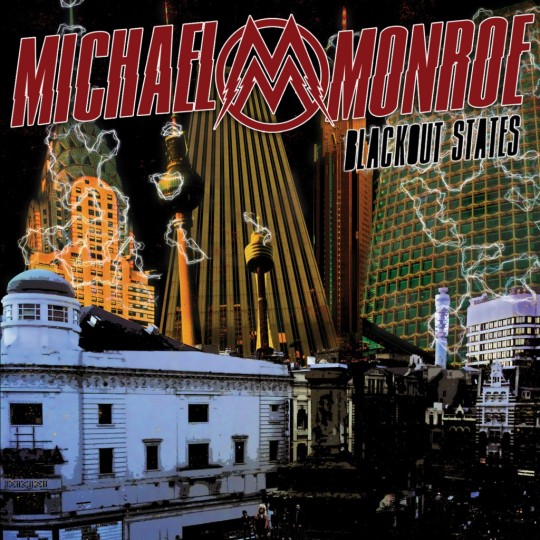
6. Dave Brock – Brockworld
Lemmy’s former Hawkwind bandmate Dave Brock, the inventor of space rock, has long been recognised as a visionary who plays by his own rules, creating sweeping soundscapes with the help of hallucinogens and psychedelic drugs. While Hawkwind’s material is hit or miss to me, Brockworld is a different proposition. Inspired cosmic melodies fuse with epic vocal harmonies in a symphony of space-fuelled bliss. Turn it up loud and experience a revelation.
Favourite track: Life Without Passion.
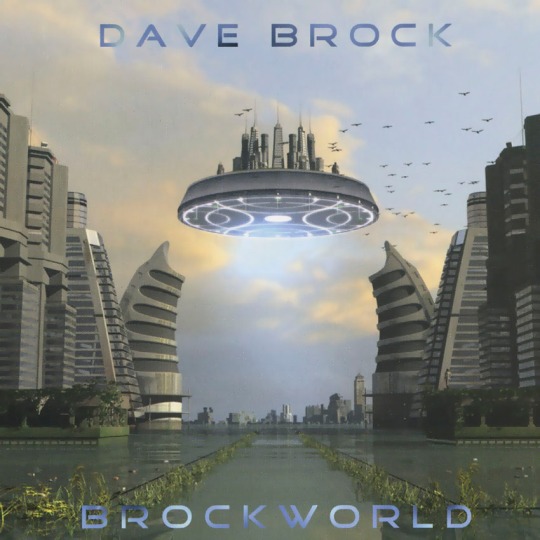
7. Ludovico Einaudi – Elements
Genius. There’s nothing I can say about Einaudi’s inspired instrumental compositions that the music can’t say better. Piano and strings in perfect harmony. Buy everything he has ever recorded. Listen to it often. Life improved, just like that.
Favourite track: Night, performed by Ludovico Einaudi with Amsterdam Sinfionetta.
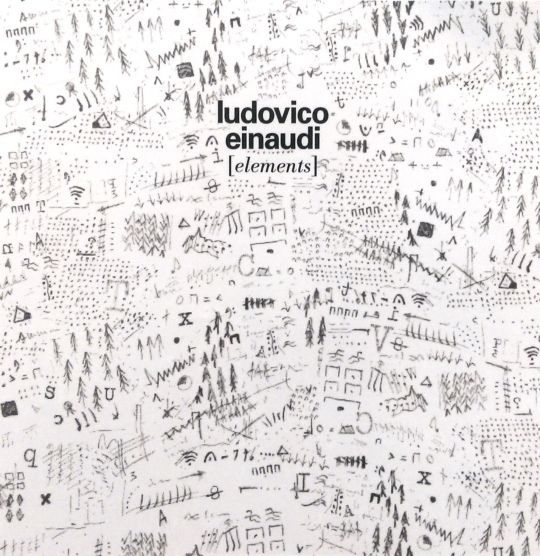
8. Saxon – Battering Ram
Metal legends Saxon released their debut album back in 1979. Since then they have unleashed consistently high-calibre music, crafting an unfeasible amount of iconic riffs, hooks and melodies with apparent ease. Battering Ram is another mighty album from true metal pioneers.
Favourite track: Kingdom of the Cross – the spiritual successor to Broken Heroes. Biff’s spoken-word delivery is spine-tingling.
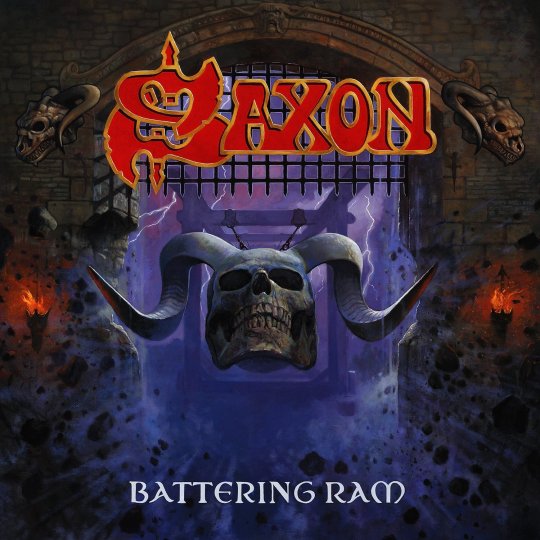
9. Motörhead – Bad Magic
I was tempted to place this at number 1, all alone, for sentimental reasons more than musical ones (although it breaks my heart to say it, this is the last Motörhead studio album the world will ever see). The songs are quintessential Motörhead – loud, heavy, distorted, raw, bass-heavy anthems. When Bad Magic first arrived I was discussing it with my German author/artist/musician friend Frank, a fellow ‘head fanatic. Lem was still alive at that point, but looking frail and cancelling concerts due to ill health. Frank said he was loving the album, but at the same time experiencing a bad feeling when he listened to it…the feeling that it would be the last album from the mighty Motörhead. He was right. A few months later Lem died. As swan songs go, Bad Magic is an impressive one, especially when one takes into account that Lemmy was seriously ill while composing and recording it. That makes the achievement all the more profound and Lem’s performance all the more brave. This will always be the most difficult Motörhead album for me to listen to, not for musical reasons but sentimental ones. Listen to it I will, though, often, even though it hurts. Thank you, Lem, for everything.
Favourite track: Till the End.
“Don’t tell me what to do, my friend.
You’ll break more hearts than you can mend.
I know myself like no one else – nothing to defend.
My life is full of good advice
And you don’t have to tell me twice.
Living here in paradise,
No rules that I should bend.
In my years my life has changed.
I can’t turn back the time.
I can’t tell you just what made me change.
All I know is who I am – I’ll never let you down.
The last one you can trust until the end.”

10. Toto – XIV
This album is more than a return to form for Toto. It is a regenesis. They have long been a respected band, especially in AOR circles. Africa was one of the first singles I ever bought on vinyl. To this day that chorus still gives me chills. So I know how good Toto can be when the chemistry’s right, but I wasn’t expecting them to release an album this good in 2015, seemingly out of the blue. The obvious standout tracks are Burn and Orphan. My gig of 2015 was Toto at Glasgow Royal Concert Hall, my first time seeing them with new singer Joseph Williams (son of John Williams – composer of the soundtracks to Star Wars, Superman, Raiders of the Lost Ark and many more). Joseph’s vocals on XIV (and live) are breathtaking.
Favourite track: Burn.
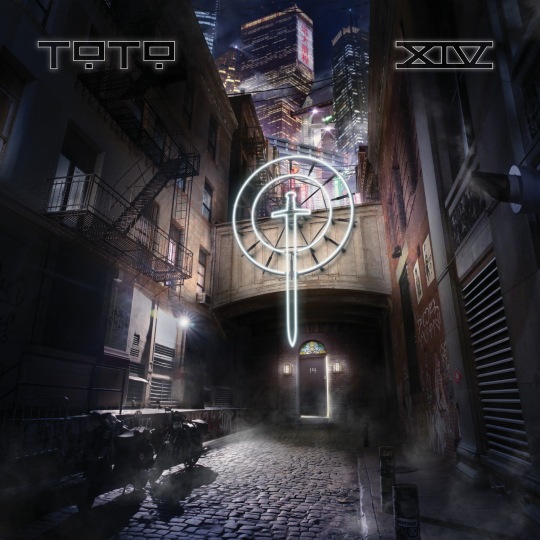
11. Hearts of Black Science – Signal
This duo’s sound has elements of electronica, darkwave, shoegaze, goth, ambient, and occasionally rock (the opening of Faces – first song on Signals – is reminiscent of Pink Floyd’s Run Like Hell). Daniel Änghede’s vocals sometimes resemble those of fellow Swede Morten Harket (singer in A-Ha). Not that there’s anything wrong with that, as Jerry Seinfeld might say. If you like dark and brooding electronica, give this a whirl.
Favourite track: Faces.
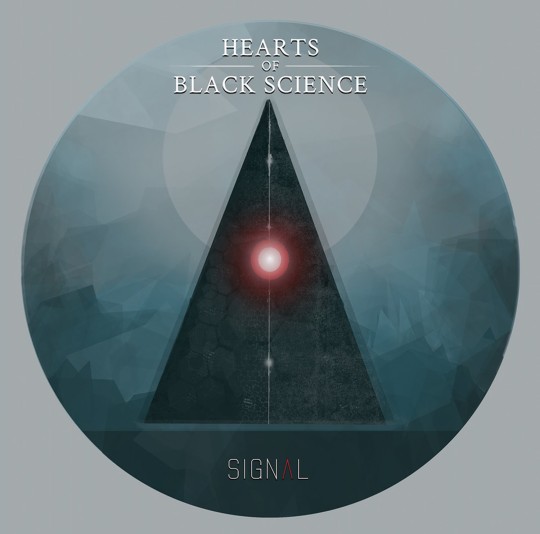
12. The Prodigy – The Day Is My Enemy
This was my most listened-to album during training sessions in 2015. The walls of my Muay Thai gym shook to the rhythms of The Prodigy’s newest batch of adrenaline-fuelled anthems. Like only a couple of their previous albums (The Fat of the Land and Invaders Must Die), The Day Is My Enemy is consistently strong throughout. A wall-shaker.
Favourite track: Wild Frontier.
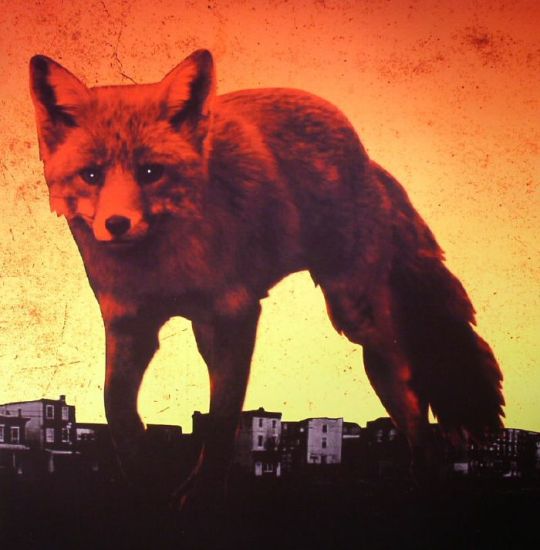
13. Leftfield – Alternative Light Source
About time! A welcome return from one of the only bands who take longer than Guns ‘n’ Roses in between albums (there were 16 years between Leftfield’s second studio album and this, their third, while the Gunners took a mere 15 years to create Chinese Democracy). Was Alternative Light Source worth the wait? Yes and no. Yes because it’s a strong chunk of electronica with some inspired moments. No because any album that takes 16 years to create ought to be a work of immaculate genius. I’m happy to have another Leftfield album to listen to, though. Seeing them perform it live on tour was a joy.
Favourite track: Universal Everything.
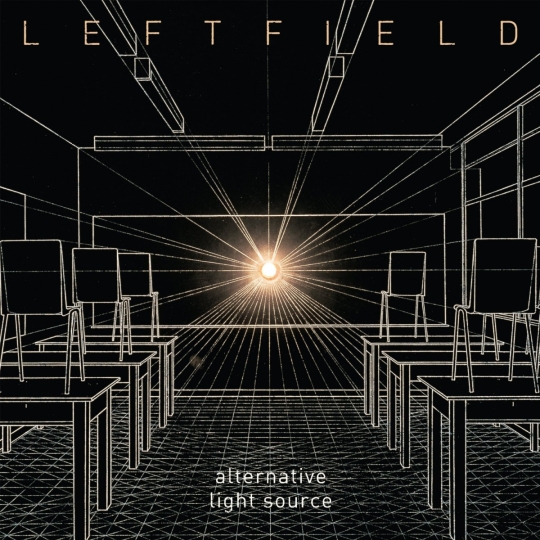
14. Soilwork – The Ride Majestic
Close friends of In Flames (who along with Dark Tranquillity defined Sweden’s ‘Gothenburg sound’: the blueprint for melodic death metal), Soilwork play it like they mean it. To my ears, The Ride Majestic isn’t quite as strong as its predecessor, The Living Infinite (a monster of an album), but it’s no slouch either. The riffage is still jaw-droppingly perfect, Dirk Verbeuren’s drumming is still outrageously fast and precise, vocalist Björn ‘Speed’ Strid still nails every note, and the melodies are still – no pun intended – to die for.
Favourite track: Death in General.
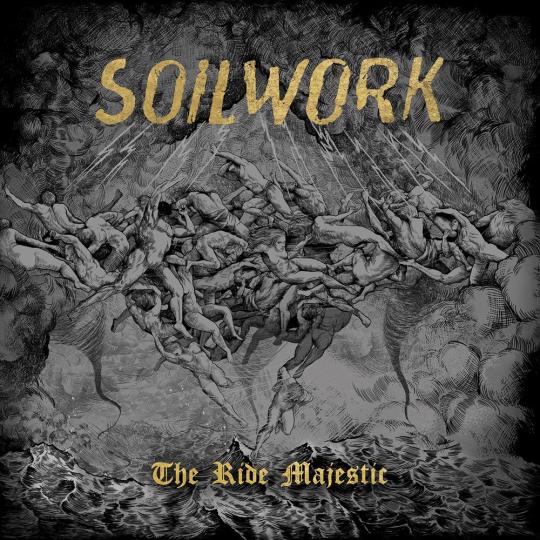
15. Michael Schenker’s Temple of Rock – Spirit on a Mission
I can’t get enough of Schenker’s guitar work. Whenever I walk into a music shop and pick up a guitar, it isn’t Stairway to Heaven or (Don’t Fear) The Reaper I play to put the instrument through its paces and annoy the staff: it’s Doctor Doctor from Metal Mickey’s time in UFO. This MSToR lineup sees Schenker joined by two of his former Scorpions bandmates – Francis Buchholz on bass, and Herman ‘Ze German’ Rarebell on drums. Doogie White (a Scotsman!) handles full-time vocal duties for the second time on a Temple of Rock release. I witnessed Doogie out Spinal Tapping Spinal Tap at MSToR’s Edinburgh show in 2015, at which he said, deadpan, “This is a song about good times. It’s called Good Times.” I fell apart laughing – out-of-control, thigh-slapping, tears-running-down-the-cheeks laughter. Thanks, Doog. Spirit on a Mission is exactly what you’d hope for from three Scorpions, a Scottish powerhouse vocalist, and musical prodigy Wayne Findlay.
Favourite track: Let the Devil Scream.
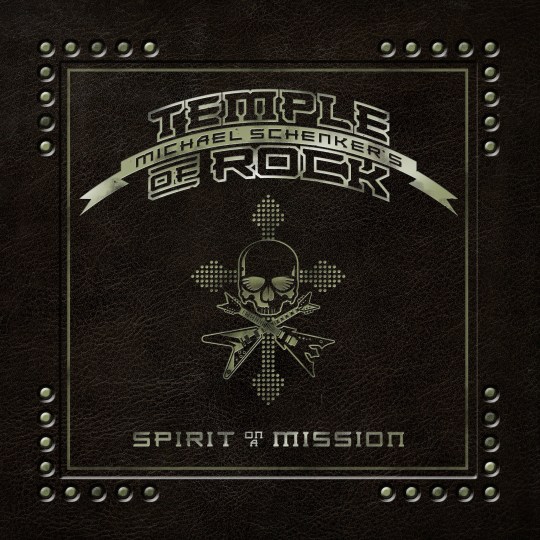
16. Queensrÿche – Condition Hüman
The ‘rÿche ranks have been infused with new energy and purpose since Todd La Torre replaced Geoff Tate on vocals. The two singers sound alike, but the infighting that had long dragged the band down and curbed their creativity is now gone. As a result, the band’s two albums with La Torre have seen a return to the urgency and inspired songwriting of ‘rÿche classics Rage for Order and Operation: Mindcrime.
Favourite track: Toxic Remedy.
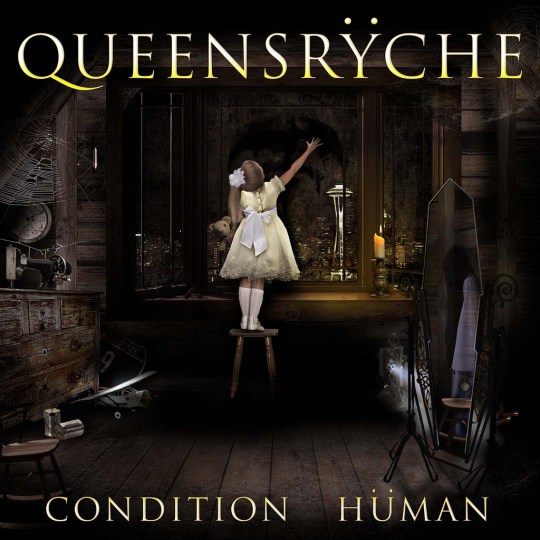
17. Lucifer – Lucifer I
I bought this debut album on a whim because it’s on Lee Dorrian’s Rise Above label. So I figured it would be dark, doomy, heavy and – like everything Dorrian touches – Sabbathesque. I was right about the music but the vocals were a surprise. Female singer Johanna Sadonis gives the doomy metal a haunting edge. Also, she has the look and gravitas of a siren from a 1970s Hammer horror film – a definite bonus for a woman fronting a doom band. And with ex-members of Cathedral and Angel Witch in the ranks, this is doom metal with a pedigree.
Favourite track: Izrael.
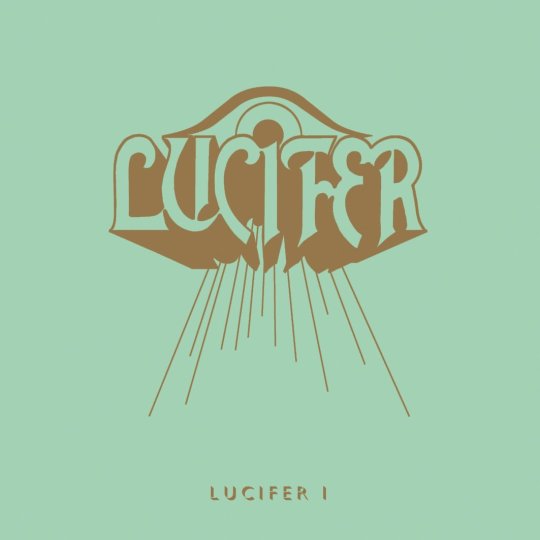
18. Trivium – Silence in the Snow
In April 2016 I witnessed Trivium frontman Matt Heafy letting loose the Spinal Tapworthy line, “It’s great to be here in Kilmarnock, the most metal city in the world!” Unlike Doogie White when he made his top Tap statement a few months earlier in Edinburgh, Heafy seemed to have tongue firmly in cheek. He knew Kilmarnock was neither a city nor a hub of heavy-metal debauchery but said the line anyway, because that, when faced with a metal crowd, is always the thing to do. As long as you get the location right, you can’t really go wrong (unlike David Lee Roth, whom I’d witnessed in Glasgow shouting, “It’s so naaaaaaahce to be bayyyyyyyck in…where the fuck are we?”) Anyway, back to Trivium. They released their first album when they were in their teens, starting out as wannabe Metallica clones who then grew up, found their own sound and refined it into something majestic. They can still thrash with a vengeance, but it’s when they slow things down that their music sounds really impressive (a prime example is the intro to Down from the Sky, from the excellent Shogun album – THAT is a riff). There are several such tunes on this album (the title track, as well as Dead and Gone, The Ghost That’s Haunting You, Pull Me from the Void, and Beneath the Sun).
Favourite track: The Ghost That’s Haunting You.

19. Venom – From the Very Depths
An angry bastard of an album from the inventors of black metal. Every time it seems that Cronos has quit music, he bounces back with another surprise. The tracks on this album lack the frenetic pace of Venom’s early material, but they’re better off for it. In fact, some of these songs are tuneful! Who’d have thought it? Yet there it is: Venom in 2015=tuneful. The standout track – Smoke – should be played to aspiring metal musicians over and over again, so they can mentally file it under ‘How It’s Done’.
Favourite track: Smoke – a gargantuan riff, glorious heavy groove and gorgeously guttural vocals. Classic.
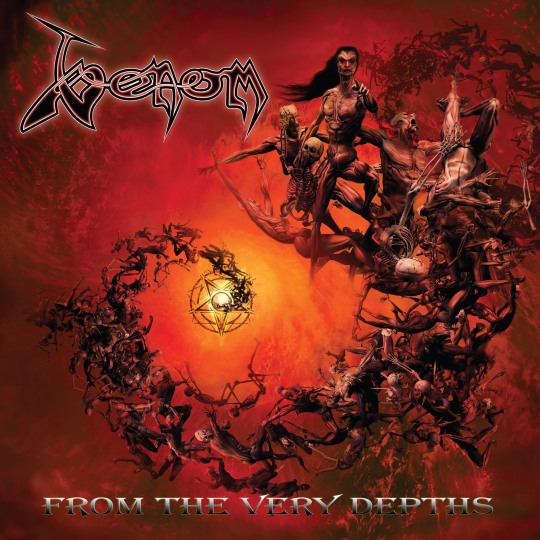
20. Hardcore Superstar – HCSS
Hardcore Superstar’s 2009 release Beg for It is one of my all-time favourite albums, so I can’t help comparing the band’s subsequent releases to it. I want everything they record to be that good. They have a gift for coming up with catchy hooks and chantalong choruses. Over the last couple of albums, however, the band has moved increasingly back to its sleaze-metal roots: slower tempo, muddier production and looser songs. They are still eminently listenable, but I wish they’d return to the sonics of Beg for It: precise metal with massive hooks and soaring vocals. HCSS isn’t a tight album. It doesn’t try to be. Rather, it ambles along with a raw, easy swagger. Still a great band on record. Still one of the greatest live bands on the planet. I just wish they’d ditch the loose sound and get back to writing metal that’s tighter than the proverbial nun’s fanny. (What is a proverbial nun anyway? Have you ever seen one?)
Favourite track: Touch the Sky – rocky psychedelia with a vibe reminiscent of fellow Swedes The Electric Boys, coupled with a vocal that sounds like Police-era Sting.
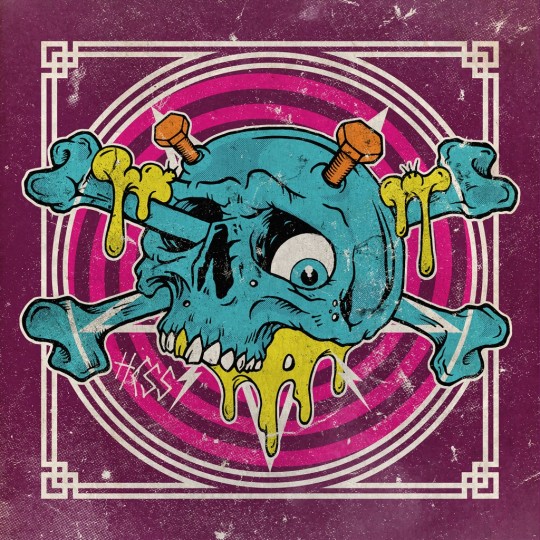
21. Steve Hackett – Wolflight
I’ve never been a Genesis fan, yet I love Steve Hackett’s solo material. His guitar work is sublime. He doesn’t go for the frenetic fretboard widdling favoured by so many rock guitarists. Hackett’s goal is to play exactly the right note in exactly the right tone at exactly the right time. He has mastered this. Wolflight sees Steve exploring a variety of musical styles, including medieval, rock, eastern, choral, classical and more, all handled with a deft touch. The album cover – featuring a dark and moody Steve surrounded by his wolf pack in front of a crumbling castle wall under a Full Moon – is an instant classic. Perhaps the album will come to be regarded as a classic, too. Time will tell.
Favourite track: Corycian Fire.
22. Riverside – Love, Fear and the Time Machine
Polish prog in the vein of Marillion, especially the Rotheryesque guitar refrains, which are subtle, heart-tugging and deep. The Riverside sound is undeniably proggy, yet it never veers off into self-indulgent musical wankland. How many other prog bands can say that? Beautiful songs. Gorgeous vocals. Another impressive album from the Poles.
Favourite track: Caterpillar and the Barbed Wire.
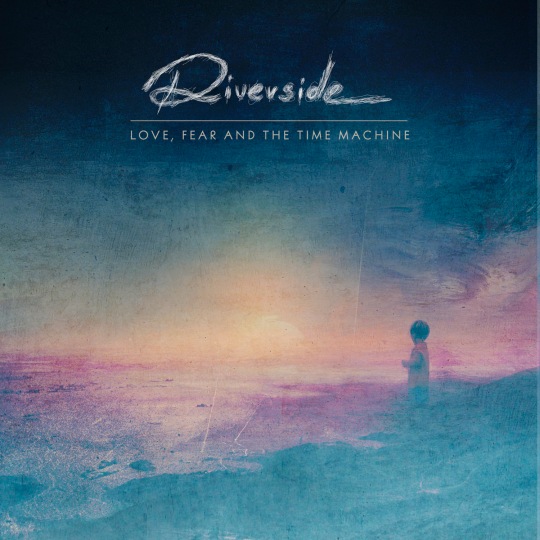
23. Europe – War of Kings
These Swedes are seasoned professionals with a masterful command of their craft. Also, they have the dubious honour of being the only iconic metal band whose definitive riff was not cranked out on a guitar, but parped out on a keyboard! These days Joey Tempest’s vocals are as smooth as ever but the band is less ballady, having morphed into a heavier monster over the years, particularly in a live setting. Seeing Europe on the Start from the Dark tour a few years ago, I was astonished by the heaviness of their performance. The melody was still present, but the guitar riffage and rhythm-section artillery would have drowned out many extreme metal acts. Even the parptastic The Final Countdown was heavied up and tuned down, so much so that it nearly blew the roof off the venue. So to 2015 and War of Kings. It’s quintessential Europe – a blend of heavy melodies, bluesy Deep Purplesque refrains, effortless soaring vocals, big hooks and anthemic choruses.
Favourite track: The Second Day.
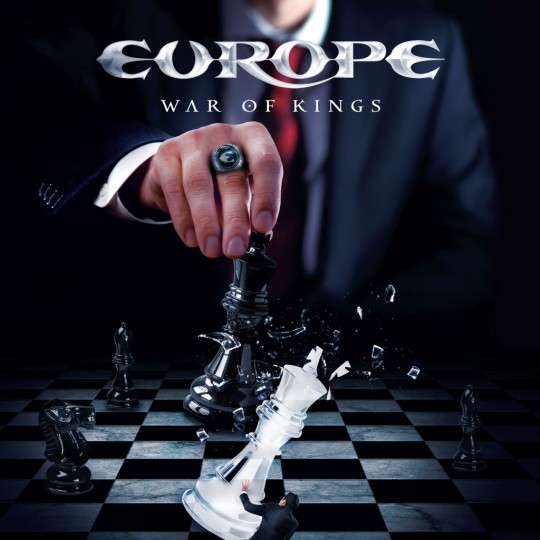
24. The Darkness – Last of Our Kind
The Darkness started out straddling the line between performance and parody. That garnered them much attention in the beginning but then left them in a strange position. They enjoyed their work and had fun with it, composing some classic tongue-in-cheek lyrics, and infusing promo videos and live gigs with their infectious brand of nonsense. This confused a lot of people. Was this a comedy act like Bad News, or was it the real deal like Thin Lizzy? I was never in any doubt. When I saw them live in Glasgow just after the release of their debut album, it was clear that this was a British equivalent of early Van Halen – a band with a flair for exhibitionism, humour, fun and fabulousness. Last of Our Kind is a serious album by Darkness standards. The effervescent energy is still present, as are the huge hooks. The music is bouncy, crunchy, punchy and in parts perfect. It’s good to have them back.
Favourite track: Last of Our Kind, with its sublime Who/Queen/Ace Frehley vibe.
25. Helloween – My God-Given Right
My favourite incarnation of Helloween was the one that recorded Keeper of the Seven Keys Part One – a seminal album that raised the bar for thrash excellence. Despite that lineup splitting decades ago, I’ve kept up with Helloween releases ever since. When Andi Deris joined Helloween in the ’90s, the band adapted to suit his vocals, favouring a more mainstream metal sound. They’re consummate musicians, energetic live performers, talented composers, and still flying the flag for Teutonic metal. And they’re as crazy as Basil Brush on magic mushrooms.
Favourite track: Stay Crazy, a metal classic bursting with powerful riffs, excited vocals and lunatic lyrics such as “We wanna stay crazy, as fresh as a daisy.”
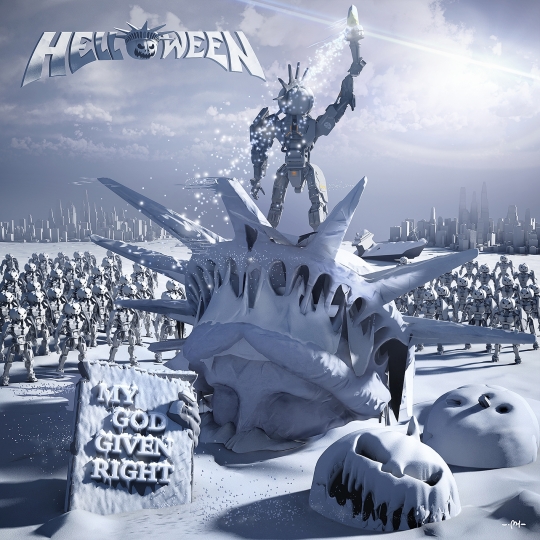
26. Iron Maiden – The Book of Souls
I never thought I’d see the day when an Iron Maiden album didn’t make it into my top 3 albums of the year, never mind missing out on the top 25. The Book of Souls is by no means a bad album, but it sounds like Maiden by numbers: it lacks the vital spark of inspiration. I bought the limited Book Edition. Its artwork (by longtime Maiden collaborator Derek Riggs) inside and out is spectacular, as usual. The musical execution on the album is beyond criticism but missing are the iconic riffs, big hooks and passion on which this band built its reputation. The songs sound sterile, with not a classic among them.
Favourite track: The Red and the Black.
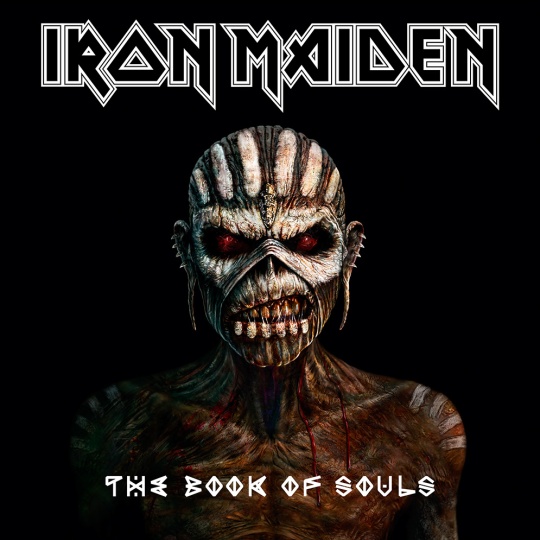
27. Sorcerer – In the Shadow of the Inverted Cross
This sounds like Dio mixed with Black Sabbath circa Headless Cross. There are Tarot similarities at points, too. If that sounds like your cup o’ tea, give it a whirl. Sorcerer’s musical pedigree is audible throughout, but some tracks suffer from the same symptoms as Maiden’s 2015 effort: a theatrical metal-by-numbers sound which gives those songs a generic feel. The more inspired songs, however, are doomy metal worthy of repeated listens.
Favourite track: The Gates of Hell.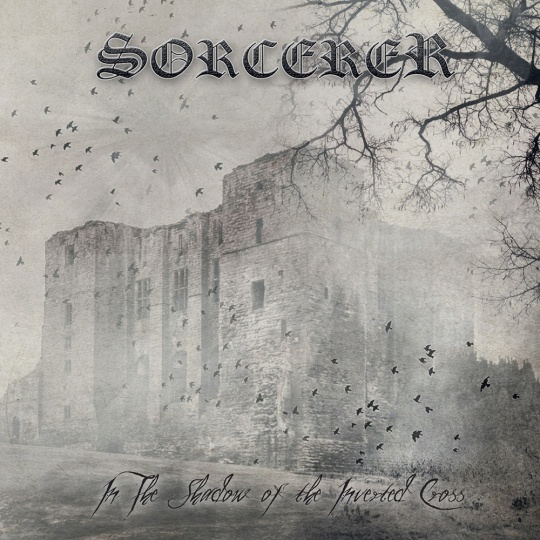
28. Def Leppard – Def Leppard
Sheffield’s favourite musical sons, having reinvented themselves several times over their mega-platinum career, return to the formula that brought their biggest commercial success: the Hysteria blueprint. (Hysteria has sold over 20 million copies…and counting.) I’m not going to judge them for that, as I love the bouncy energy of Hysteria’s hook-laden tunes – a perfect blend of power ballads, pop-rockers and polished metal anthems. In 1986 Hysteria broke new ground in terms of multi-layered songs and production (courtesy of Mutt Lange). If they were determined to emulate the sound of a previous recording, I’d have preferred it to be Pyromania (epic heavy metal rather than the pop-rock-metal-lite of Hysteria). I’m not complaining, though. A new album from the Lepps is always welcome.
Favourite track: Let’s Go – a quintessential Leppard track that shamelessly recycles the Pour Some Sugar on Me riff. (If you had come up with a riff that iconic, would you be able to resist recycling it? Some other bands make careers out of recycling the same few chords over and over.)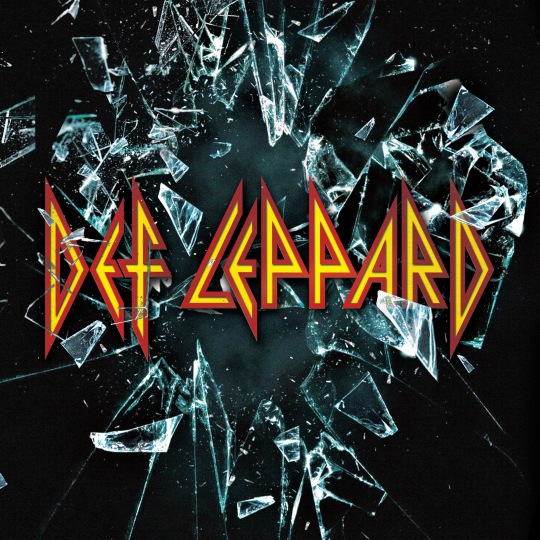
29. UFO – A Conspiracy of Stars
UFO is one of Britain’s longest established and most influential rock bands. Although Glenn Hughes refers to himself as the voice of rock, I’d argue that UFO’s Phil Mogg has a stronger claim to that title. But what about UFO’s current incarnation and its 2015 album? With a different vocalist this collection of tunes might sound average, but Moggy makes them better than that. My main criticism of A Conspiracy of Stars is that UFO has a real guitar wizard in Vinnie Moore, yet on this album he’s plodding along in second gear most of the time, rarely allowed to flourish. That seems criminal, given the remarkable ability he has. I’m not suggesting UFO go all Yngwie Malmsteen and rattle out widdly histrionic musical wankfests with ten million notes squeezed into each song. That would be preposterous. Vinnie would never do that anyway, as he’s a tasteful player as well as being technically exceptional. But he could have been allowed to shine more often on A Conspiracy of Stars. It’s an enjoyable album nonetheless, but not quintessential UFO.
Favourite track: Sugar Cane – a beautiful Paul Raymond keyboard intro leads into some bluestastic riffs from the Moore man (and his best solo on the album), while Moggy’s unmistakable voice puts the UFO stamp on the whole thing.
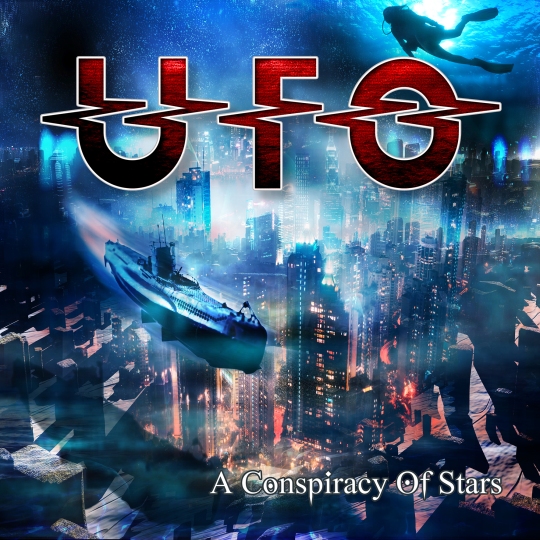
30. Scorpions – Return to Forever
Another solid album from one of metal’s longest-running (51 years!) bands. Scorpions can always be relied upon to produce quality music. They can also be relied on to fling a great big poofy ballad or three onto every album (not, once again, that there’s anything wrong with that). In terms of influence, Rudolf Schenker and Klaus Meine are to German metal what Mick and Keith are to British rock ‘n’ roll. For good reason.
Favourite track: Rock ‘n’ Roll Band (even though it steals its main riff from Deep Purple’s Burn).
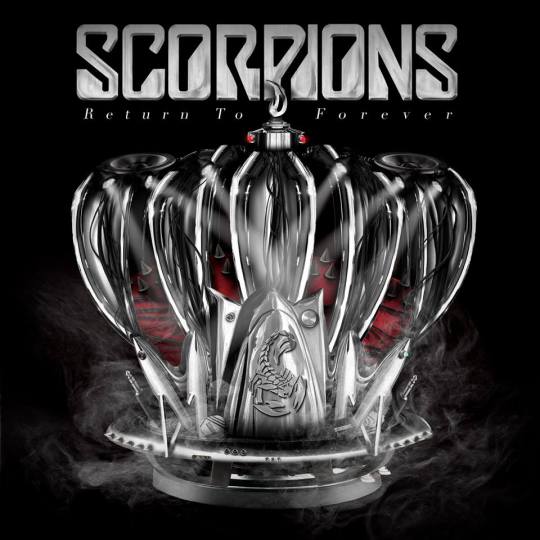
That concludes my roundup of 2015’s finest albums. Here at Horned Helmet the Metallic Dreams sequel continues to grow into something epic. Also, a collection of my short works (entitled Heathen Howff) is now available. With zero promotion it reached #4 on Amazon’s world literature sales rankings within 48 hours of release, then plummeted thousands of places in the following week. The Icarus of unpromoted literature! So now, even though promoting feels unnatural to me, it’s time to plug the book. A grown-up Scottish answer to Aesop’s Fables (which I loved as a child and still love every bit as much), Heathen Howff contains non-fiction, fiction, poetry and philosophy, all held together by the common factor that each piece has a moral. The book can be bought for Kindle here or in paperback here. Give it a whirl. If you don’t like it I’ll eat my hat…and my hat’s a horned helmet!
Until next time, slàinte mhath.
Mark
